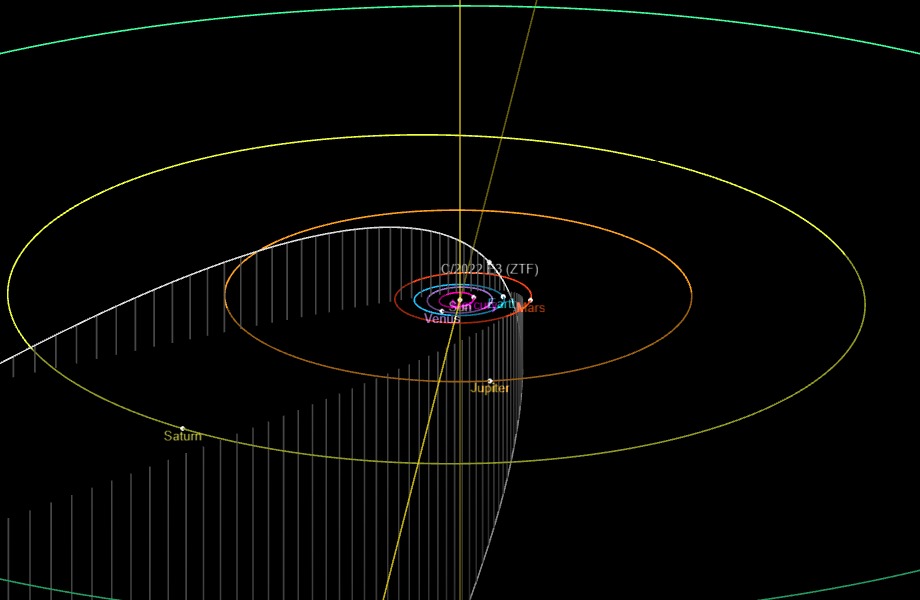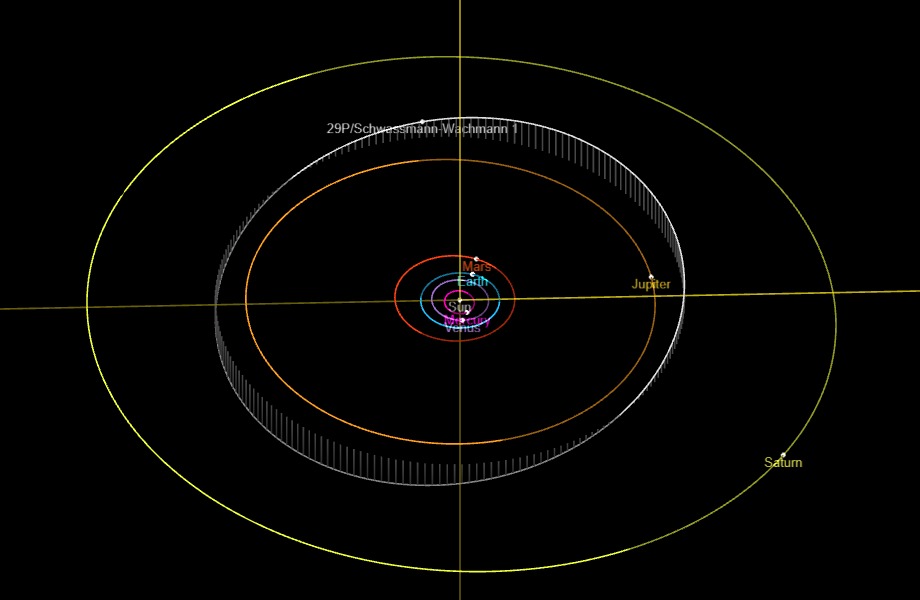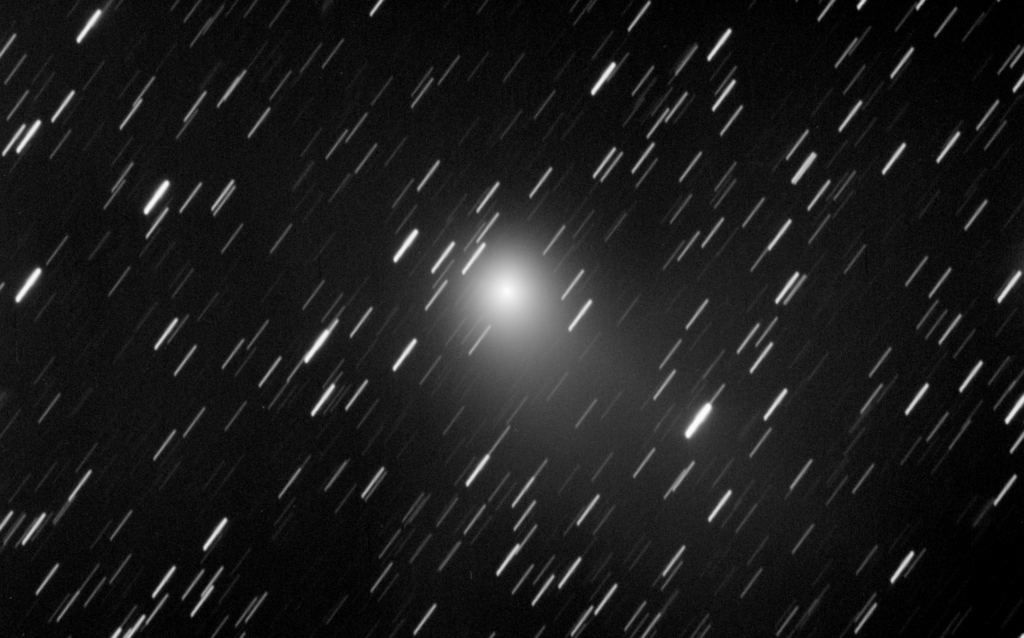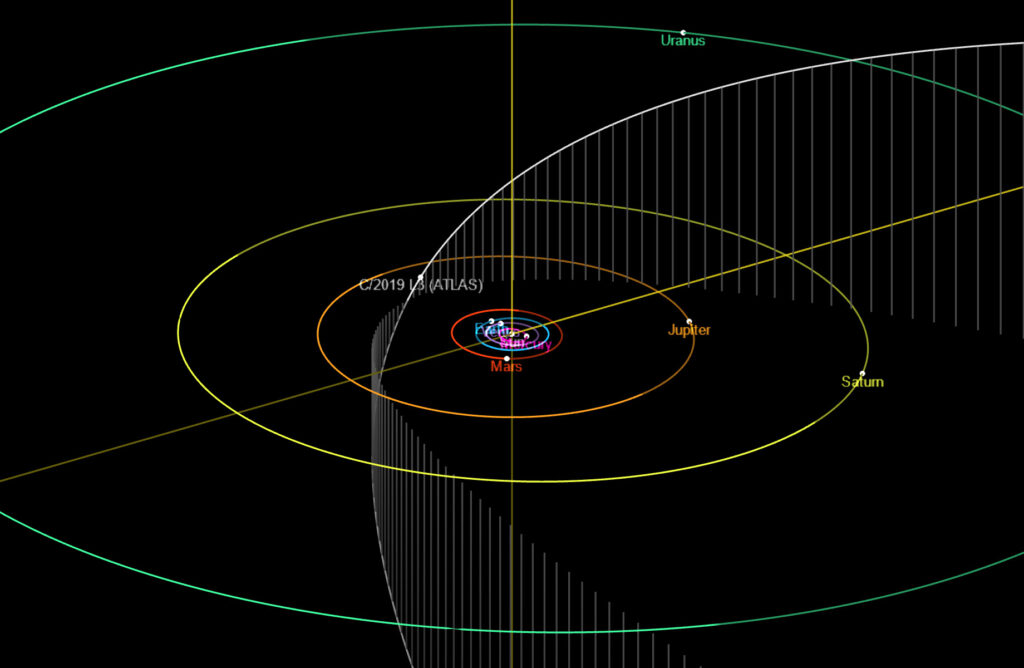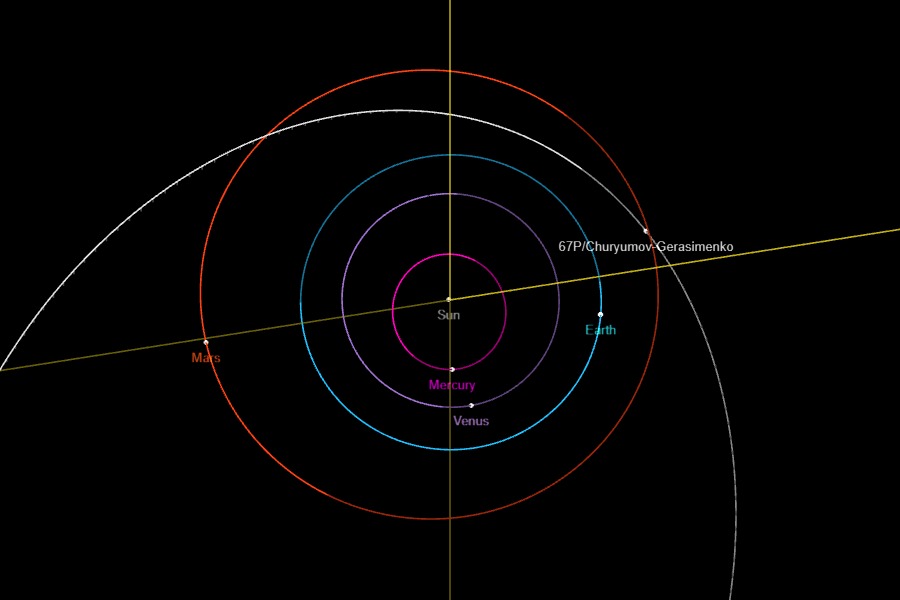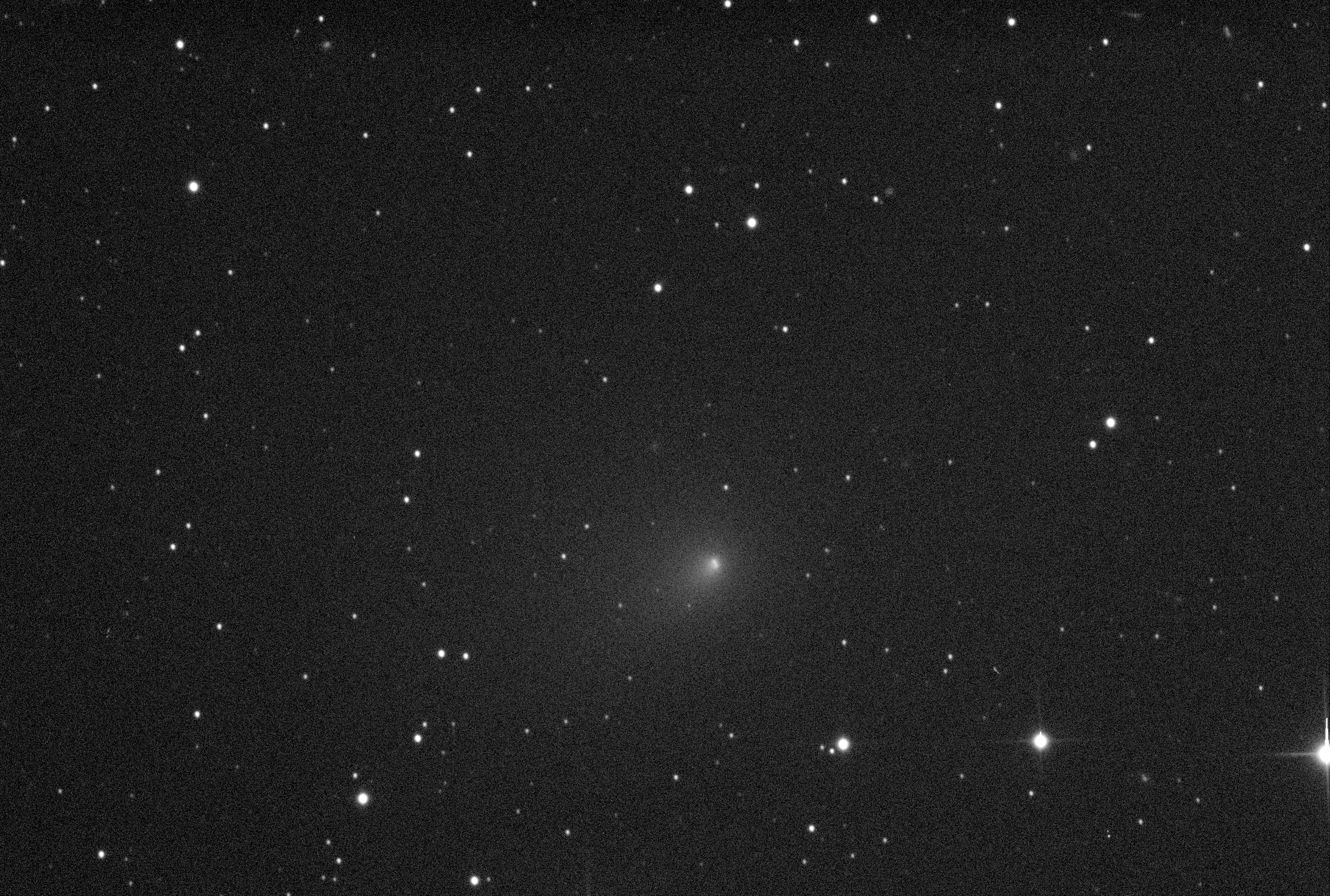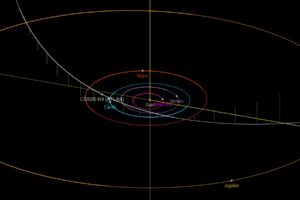Due to prompting from some of my west coast friends, I stayed up way too long and got these images of the “green comet” just before encroaching clouds and pending dawn stopped the session. Additional interference was light from a 16-day old Moon. But this stack shows the comet is developing a nice tail.
The comet is a long period comet. JPL says the orbital period is not defined; other sources just say the orbit is greater than 50,000 yrs. It spends most of that orbit below the ecliptic, but right now is above it and just outside Earth’s orbit. It will cross below the ecliptic around the 12th of February roughly halfway between the Earth and Mars. It will be closest to the Earth on the 1st of February.
So, this is just a preview. In a couple of weeks, the comet will be above the tree line at a more convenient time (0300), the Moon will not be up, and I will be able to take the necessary exposures to put together a color photo.

